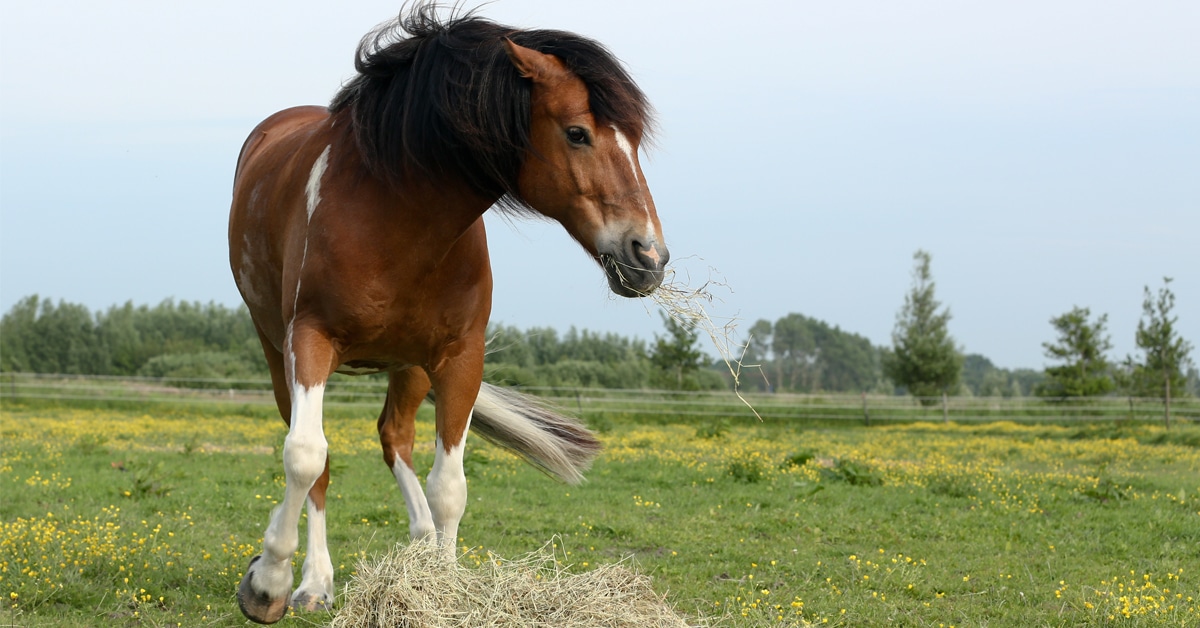Over the past 18 months, there have been numerous tales floating around on Internet forums, social media, and in the news describing a surprisingly simple technique to treat dummy foals that has not only taken the equine world by storm, but fascinated those in human medicine as well. “Watching foals in this state, it was easy to draw a parallel to autism,” Dr. John Madigan, a professor at the University of California Davis and equine neonatal expert told Healthline last May. “We’re measuring something that hasn’t been measured before.”
Madigan and his research colleagues are assessing levels of neurosteroids, chemicals that control, anxiety, depression, and other brain functions. Their hypothesis – derived from previous research – is that children with autism have elevated levels of similar neurosteroids. Although their research is still in the nascent stages, the results could be a tremendous breakthrough for the treatment of individuals with autism spectrum disorder (ASD), which affects an estimated 1.2 million Canadians and has been on the rise since 2012. “I don’t want people to panic,” Dr. Evdokia Anagnostou, a child neurologist and autism researcher at Holland Bloorview in Toronto, told CTV News in 2014 in regards to the increasing numbers. “Yes, the trend is upwards, but it may be the result of
better diagnosis.”
Causes of Dummy Foal
Identified in the 1950’s, neonatal maladjustment syndrome, or “dummy foal” syndrome, is not a disease, but rather identifies foals that behave oddly, usually with abnormal neurological signs, within the first several days of birth. These signs include sleepiness, weakness, circling, a lack of interest in nursing – or in their mothers completely – seizures, hypersensitivity to touch, depression, and atypical vocalization. The condition is also referred to as hypoxic ischemic encephalopathy, peripartum asphyxia syndrome, wanderer foal, or barker foal.
The majority of dummy foal cases occur during a difficult birth when a foal’s tissues may not receive adequate oxygen. It can also develop from a redbag delivery (when the placenta is disconnected too early) and from Caesarean section. The syndrome may also be present if the foal was premature, has lung disease, an infection in the bloodstream, or anemia.
Some foals develop dummy foal syndrome without experiencing any of these circumstances or conditions. It is thought in these cases there must have been some problem with the placenta in utero where the foal did not receive enough oxygen. According to statistics from the University of California at Davis, it occurs in 3-5 per cent of all live births in all breeds of horses.
The Madigan Squeeze
Several years ago, Madigan developed a technique that although simple, has proved to be highly effective. Coined by many as the “Madigan Squeeze,” this type of treatment for dummy foals was first published in the American Journal of Veterinary Research in December 2012 and evaluated eight foals.
“In neonatal foals, the evaluated form of restraint resulted in a decrease in heart and respiratory rates and rectal temperature,” the study said. “Squeeze-induced somnolence may resemble the effects of compression of the fetus in the birth canal and lead to inhibition of voluntary activity. Use of this technique to safely restrain neonatal foals during minor procedures warrants further evaluation.”
Although many of the physiological functions of neurosteroids are unknown at this time, Madigan feels they are the crucial element in how a foal is physically triggered to “wake up” at birth. He conducted a study in 2011 illustrating this hypothesis.
During a normal birth, a foal is in the birth canal for about 20 minutes and during this time is when the neurosteroid levels are reduced, as they are quite high in utero. This is to inhibit the growing fetus from moving abruptly or “galloping” while in the womb. In other words, the neurosteroids act as a sort of pacifier and their levels dramatically decrease once the foal is born. As horses are a fight-or-flight animal, a foal must be able to run within several hours of birth to avoid predators. The dummy foals Madigan tested showed high levels of neurosteroids, while normal foals did not.
Madigan’s technique, where the gentle pressure is applied for the amount of time the foal would be in the birth canal, gently lulls them to sleep by placing them on their side and when they rise, the correct physiological triggers are enabled. It is a very simple treatment method, but appears to achieve amazing results, although Madigan has cautioned, as all scientists do, more research and evaluations must be conducted prior to determining it is ultimately a success.
A Life-saving Procedure
Sabine Harmann, a veterinarian in rural Loyal, Wisconsin, is a believer in Madigan’s procedure. She has witnessed her fair share of animal health issues, but a situation in April of last year with a premature Standardbred filly was a rarity. It required some swift thinking, a willingness to attempt a new technique, and faith in her efforts.
“This filly was born two weeks early,” said Hartmann, who operates Hoof and Paw Veterinary Clinic, LLC. “She was found out back around six o’clock in the morning drenched in water and covered in mud and manure. She was brought inside, cleaned up, and wrapped in blankets to keep her warm.
“When I arrived, she was unable to stand alone on her hind legs, so we administered 800 millilitres of colostrum. I then left, promising to check back, and during the day the owners were able to feed her about a bottle and a half of colostrum. That was enough to sustain her, but she simply refused to nurse. When I returned at six o’clock in the evening, even though I continued to try to show her how to nurse, she had no interest in doing so.”
That is when Hartmann decided to contact a veterinary colleague to ask his opinion on the course of action she should take next. “He suggested the double half-hitch method, or the Madigan Squeeze,” she said. “It is a relatively new technique and was presented at last year’s Association of American Equine Practitioners’ conference. With this method you simply take a soft rope and squeeze lightly. The pressure decreases the progesterone levels and the foals typically get up and nurse.
“That is what happened with this filly. We applied two half-hitches on her for 25 minutes. After the procedure was complete, she immediately rose to her feet and went straight to her dam. She started nursing right away when I showed her the teat.
“While scientifically speaking, we cannot say the double half-hitch was the reason the filly took interest in the mare and the teat, we cannot rule it out based on the results. I know I would definitely use it again should the need arise. It is a treatment that can only seem to help and not hurt. I have found in my experience that people in the horse business are generally willing to try most anything that will help. Obviously it worked in this filly’s case.”
Autism and “Kangaroo Care”
According to statistics from the Center for Disease Control (CDC) in the United States, ASD now affects 1 in 68 children and 1 of every 42 boys. It is one of the fastest-growing developmental disorders in the United States and there is no medical test or cure for the condition.
Madigan’s belief that neurosteroid levels have a direct bearing on the development of dummy foal syndrome and could also have an application in ASD has been supported by recent research. In 2013, a group of Polish scientists discovered autistic children tested at age 3 and 9 possessed much higher salivary levels of particular steroid hormones than children in a control group.
Funded by a grant from the Bill and Melinda Gates Foundation, Madigan is now collaborating with neonatologists at Stanford and UC Davis medical schools. Based on his foal studies, the researchers are exploring whether abnormal regulation of neurosteroids during childbirth could be one of many factors that might contribute to autism and related neurodevelopmental disorders. The study will measure neurosteroid levels in 48 human infants from birth to 72 hours old – both full-term and late preterm – to determine whether skin-to-skin contact (kangaroo mother care) influences neurodevelopment.
Developed in Colombia in the late 1970’s, kangaroo care is frequently used for premature babies in neonatal units across the United States. The infant is placed on the mother or caregiver’s chest, touching them skin-to-skin, where they remain for hours, often snugly attached to the person with a pliable piece of cloth. “There are reports of very sick newborn babies, determined unlikely to survive, making seemingly miraculous, spontaneous recoveries after being placed in the arms of a grieving parent for a last embrace,” Madigan said in the February 2015 edition of the UC Davis newsletter. “Perhaps those babies benefited from some form of squeeze-induced stimulation or neuroactivation – similar to what we’re seeing in the foals.”
If Madigan’s squeeze technique and study of neurosteroids leads to a welcome breakthrough in the prevention of ASD, the results of his work will resonate far into the future.
The Latest









